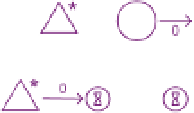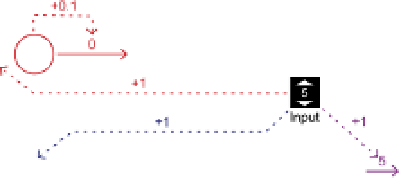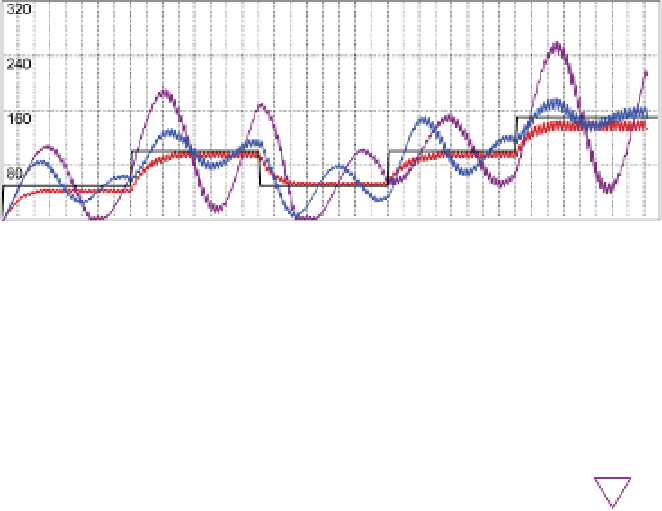Game Development Reference
In-Depth Information
make neGat i Ve Feedback sloW and durable
continued
FIGURe 9.6 The effects of making negative feedback slower and more durable
building blocks
To further explore the economy of
Caesar III,
we'll zoom in on the mechanics of par-
ticular buildings and try to understand them in isolation.
Figure 9.7
gives detailed
mechanics for four types of buildings that appear in
Caesar III
: residences, olive
farms, oil workshops, and markets.
n
The mechanics for
residences
are just as we presented them in Figure 9.5: Goods
come in and form a pool of wealth, which increases the production rates of both
money and labor, and the goods are also consumed there. If the goods are con-
sumed faster than they come in, the pool is emptied, and the production rates of
money and labor go down.
n
The mechanics for
farms
provide more details about how labor is used to produce
goods. Labor resources arrive and are delayed for a period. During this period they
set the production of olives from the olive source proportionately to the number
of labor resources in the delay. The olives go into a pool to await being pulled by
something on the outside. The diagram includes a state connection from the delay
to resource connection bringing in labor, whose function is to make sure there are
always six labor resources in the delay at one time. After passing through the delay,
the labor resources are consumed by a drain. (Note that labor resources are not
human beings; they are units of work.)












